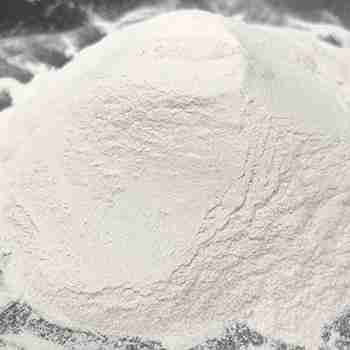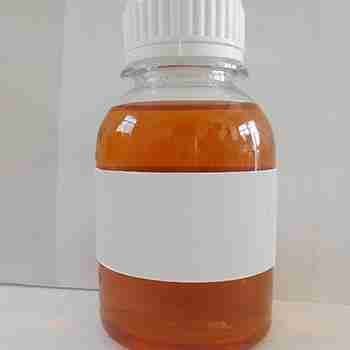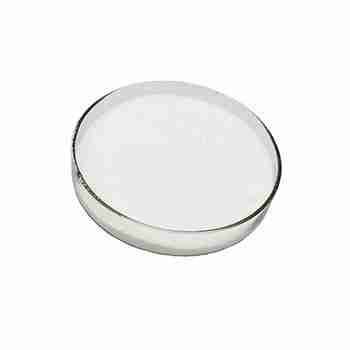Hydrolyzed Casein Cas 65072-00-6
Chemical Name: Hydrolyzed casein
CAS No.: 65072-00-6
Molecular Fomula: C21H41N5O11
Molecular weight:?539.57714
Appearance:?Milky white or light yellow powder
发送询盘
Description
Hydrolyzed Casein Quick Details
Chemical Name: Hydrolyzed Casein
Other Name: N-Z-AMINE A, Casein hydrolyzate; Protein hydrolyzates
CAS No.: 65072-00-6
Molecular Fomula: C21H41N5O11
Chemical Structure:
Molecular weight:?539.57714
Appearance:?Milky white or light yellow powder
Hydrolyzed Casein Typical Properties
Item
Specifications
Appearance
Milky white or light yellow powder
Solution colour
Pale yellow liquid
Total nitrogen
??9%
Amino nitrogen
??5%
Ash
??35%
PH
5.0-7.0
Moisture
??5.0%
Clarity(2%mg/ml)
Clear, free of impurities and black spots
Alkaline precipitate
The solution was clear without flocculent precipitation
Phosphate precipitation
The solution was clear without flocculent precipitation
Hydrolyzed Casein?application:
In the pharmaceutical industry, acid-hydrolyzed casein is mainly used as a raw material for pharmaceutical products, such as casein oral liquid and amino acid metal chelating preparations;
In the food industry, acid hydrolyzed casein is mainly used as an additive in high-end nutritional products to supplement amino acids;
In the daily chemical industry, acid hydrolyzed casein can be used as a raw material for amino acid skin care products and amino acid daily chemical products;
In the fermentation industry, acid-hydrolyzed casein is mainly used in microbial culture media;
In the feed industry, acid hydrolyzed casein can be used as a feed additive to enhance the nutrition of animal feed;
In the plant micro-fertilizer industry, acid hydrolyzed casein is an important raw material for amino acid and metal chelated fertilizers.
Hydrolyzed Casein Packaging and Shipping?
25kg/fiber drum
Hydrolyzed Casein?Storage
It should be placed in tight container,avoiding light
| 5 |
|
0 |
| 4 |
|
0 |
| 3 |
|
0 |
| 2 |
|
0 |
| 1 |
|
0 |
- 2
- 2-diallylpent-4-en-1-amine
- 4
- 95-16-9
- Ammonium sulfamate
- Benzothiazole
- cas:67889-00-3ح2
- cas:83524-75-8 | pigment black 32
- cas:928836-00-4 | 2
- cas:932745-70-5 | 4
- Chemical Minerals
- Coconut diethanolamide
- Daily Chemicals
- discount
- for sale
- General pvc resin
- hexyl D-glucoside
- in stock
- Lauramidopropyl betaine
- LAURIC ACID MONOETHANOLAMIDE
- Petroleum Additives
- Plasticiser
- Ploymers
- price
- PVC
- quotation
- Raw Materal
- Remove term: Petroleum Additives Petroleum Additive
- SODIUM ETHYL 2-SULFOLAURATE
Related Products
Chemical Name: Ammonium Iron(II) Sulfate
Synonyms: Diammonium iron bis(sulphate); iron (ii) ammonium sulfate
CAS No.: 10045-89-3
Molecular Formula: FeH5NO4S
Molecular Weight: 170.95
EC 3.4.21.14, previously classified, now redirects to EC 3.4.21.67, identifying endopeptidase So. This serine endopeptidase is integral in the hydrolysis of peptide bonds, a critical function in biological systems. Its applications extend across research and development in the pharmaceutical and biotechnological industries.
Chemical Name:?UDP-glucuronic acid
CAS No.: 2616-64-0
Molecular Fomula: C15H22N2O18P2
Molecular weight: 580.28
Appearance: Solid
Assay: 98%
Chemical Name: UV-120
Other Name: (2’,4’-Di-tert-butylphenyl 3,5-di-tert-butyl-4-hydroxybenzoate)
CAS No.: 4221-80-1
Molecular Fomula: C29H42O3
Molecular weight: 438.66
Assay: ≥99%(LC)
Chemical Name: 3-Hydroxybutyric acid
CAS No.: 625-71-8
Molecular Formula: C4H8O3
Molecular Weight: 104.1
Appearance: White powder
Copper acetate peptide, also known as blue copper peptide. Copper peptide, also known as tripeptide in Chinese; Glycyl-L-histomyl-L-lysine. Peptide is a small molecule protein composed of amino acids, which are more easily absorbed by the skin and have more significant effects. It was first isolated from human plasma in 1973 and was discovered to have wound repair function in 1985. In 1999, researchers believed that copper peptide and its copper repair products can serve as activators of tissue remodeling, and it is also a signaling peptide, Promote the degradation of a large amount of collagen aggregates outside scars, the synthesis of normal collagen in the skin, the generation of elastin, proteoglycans, and glucosamine glycans, the growth rate and migration of different cell types, anti-inflammatory, and antioxidant responses.
Chemical Name: STODDARD SOLVENT
CAS No.: 64742-88-7
Appearance: Colorless or Light Yellow Liquid
Chemical Name: Ashwagandha Extract
Synonyms: Withania somnifera, ext.; Withania Somnefera Extract
CAS: 90147-43-6
Appearance: Brown
Chemical Name: 1,1,2,2-Tetrachloroethane
Other Name: Tetrachlorethane
CAS No.: 79-34-5
Molecular Formula: C2H2Cl4
Molecular Weight: 167.85
Appearance: Liquid
Polyglutamic acid (y-PGA), also known as natto gum, is a high molecular peptide polymer synthesized from several glutamic acid monomers through microbial fermentation. It is rich in glutamic acid, glucose, protein and minerals. , vitamins and other biologically active substances.
Polyglutamic acid (??-PGA) is a sticky substance that was first discovered in ??Natto??. It is currently widely used in agricultural production and is called a new biostimulant. It is fully water-soluble, biodegradable, edible, and non-toxic. It is a biopolymer produced by microbial fermentation.
Polyglutamic acid (CAS 25513-46-6) is usually in the form of white powder.
Polyglutamic acid is a high molecular compound with good water solubility and biocompatibility.
It has many excellent properties, such as water retention, plant growth promotion, and improved fertilizer utilization. In the agricultural field, it can be used as a fertilizer enhancer, water retainer, etc., which helps to improve the fertility and water retention capacity of the soil and promote the growth and development of crops. For example, adding it to fertilizer can reduce fertilizer loss and improve the effect of fertilizer.
In the field of cosmetics, polyglutamic acid is also used, because its moisturizing properties can be used in skin care products.
Ectoine is a naturally occurring osmoprotectant, a cyclic amino acid derivative that offers exceptional cell-stabilizing properties. Highly valued in cosmetics and pharmaceuticals, it enhances product efficacy by maintaining cell integrity under various environmental stresses.



















Reviews
There are no reviews yet.